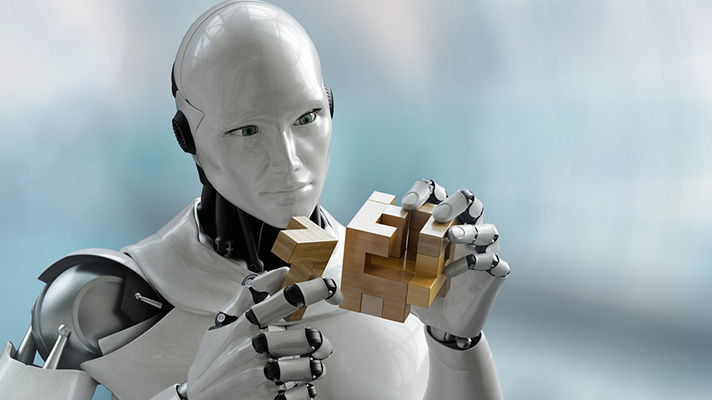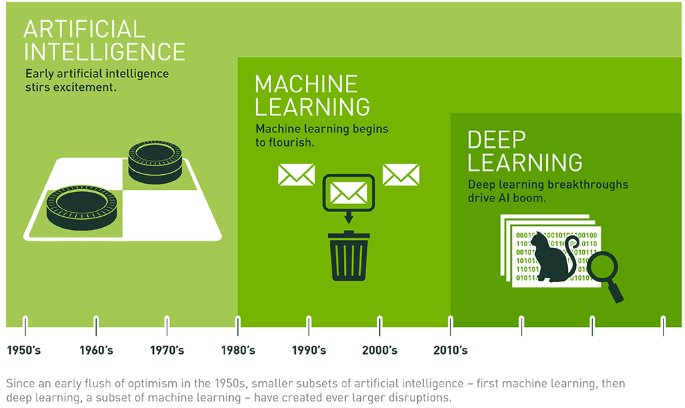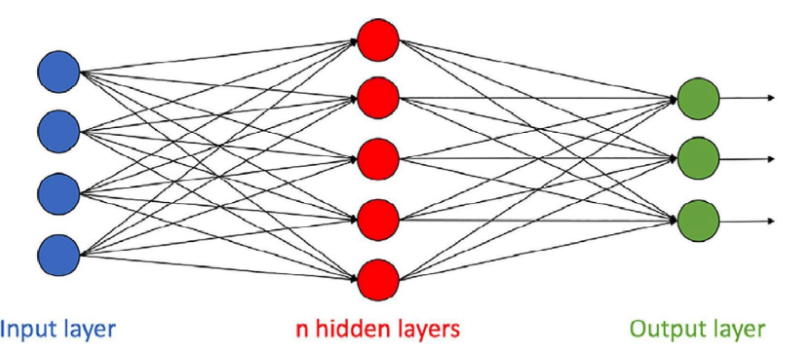
If there’s one topic that makes a radiologist’s eyes widen, it’s any mention of deep learning (DL) and how it will impact their careers. Whether it’s a fear of being replaced by robots or a genuine interest in the technology, AI and deep learning are hot topics for medical professionals.
In November 2018, Academic Radiology1 published a report by the Association of University Radiologists Radiology Research Alliance Task Force about deep learning as it applies to radiology. In the beginning, they addressed this common fear:
“Some may perceive deep learning algorithms as a threat to medicine and radiology. However, deep learning is like any other tool, intrinsically neither good nor evil, but rather dependent on the application.”
In short, radiologists and technologists have nothing to be worried about. We will walk you through understanding what deep learning is, how it applies to radiology, and what the future holds.
Deep Learning Defined
Deep learning is a result of the evolution of artificial intelligence2. While AI was first created in 1956 by computer engineers at Dartmouth College, it was meant to address problems that were difficult for humans to solve but simple for computers. While the concept has been around for a long time, it was not until the early 2010s that it became a significant presence in our lives.
(Source)
For years, it was the source of many fiction novels and movies. Scientists knew it was possible for machines to understand and make sense of large volumes of data, they just weren’t sure how to make it happen.
Eventually, their predictions turned into reality with machine learning, a subset of AI. Teaching machines algorithms to parse data, learn from, and make a determination saved scientists time and effort because they no longer had to specify each data point to the computer. It wasn’t a perfect solution but it worked and soon became a major focus in the medical community and customer world.
Scientists began testing convolutional neural networks (CNNs), a class of deep, artificial networks that are similar to biological nervous systems. Like the human brain, CNNs are capable of recognizing patterns, labeling them and assigning them to categories. Unlike machine learning, these networks do not form a cycle, enabling them to make new determinations based on massive quantities of data.
That was the start of deep learning, a technique that involves many layers. The more layers involved, the more likely it is to provide an accurate determination.
(Source)
The fascination spiked in 2012 at the ImageNet Large Scale Visual Recognition Challenge when scientists were able to prove that out of the top 5 labels chosen by deep learning algorithms, the chance that an incorrect label will be included was reduced by 10%.
Prior to DL, radiologists’ and technologists’ processes were extremely detailed and took a significant amount of time. Getting the most accurate image possible required the medical professionals to intervene in each step of the process, even with advancements in computer film colorization in the 1990s.
Deep Learning Benefits for Radiology
Deep learning offers many potential benefits, far beyond a streamlined workflow and time-saving technology. When deep learning models are trained with images labeled by experienced radiologists, it has the potential to be a training tool for future or early career professionals. Researchers predict it could help these professionals gain knowledge and increase their confidence when making diagnoses.
Deep learning techniques also have the potential to increase diagnosis reliability among radiologists. This not only benefits the radiologists, but it also benefits patients and referring physicians making it a win-win situation.
Where Has Deep Learning Impacted Radiology
Deep learning techniques that have made an impact on radiology to date are in skin cancer and ophthalmologic diagnoses. These particular medical fields lend themselves to deep learning because they typically only require a single image, as opposed to thousands commonly used in advanced diagnostic imaging.
Deep learning may reduce the rate of false-positive results for ophthalmologists3. Similarly, researchers developed a convolutional neural network (CNN) to classify skin lesions4. The result was an accuracy rating that was equal to that of an experienced radiologist.
Deep Learning Limitations
Deep learning has many opportunities to improve patient care. But it also has many limitations. The techniques have shown great promise but there are still many potential challenges to be addressed. We summarized a few of these for you here:
- Image alteration and Identification: In short, deep learning algorithms may make mistakes that humans would not. In one study, researchers altered an image in a way that was imperceptible to the human eye but impacted the classification algorithm enough to make it ineffective. It resulted in the algorithm identifying a flag pole as a Labrador retriever. This result reinforces the point that for effective AI, it must have enough data points.
- Consistency: To be successful, deep learning techniques require consistent data for all module training. In radiology, this can present an issue as companies want to protect their intellectual property.
- Implementation and Validation: We do not currently have a system to validate deep learning systems throughout hospitals and clinics. To do so would require a significant amount of resources, including multi-institutional collaboration and large datasets.
The Future of Radiology and Deep Learning
By 2030, the number of individuals over the age of 65 will increase by 73%, putting an incredible strain on the U.S. healthcare industry. Radiologists are not immune. In 2015, Medscape’s Physician Lifestyle Report5. stated that radiologists were 7th on the list of burned out physicians, with 49% saying they experienced symptoms of burnout. One major contributing factor was significant increases in workload, making time-saving technology like deep learning invaluable.
Researchers predict that deep learning could help optimize radiologists’ workload, helping identify life-threatening findings early. Other benefits may include improvement of report searches and retrieval with the construction of accessible databases.
The field of cardiology could experience significant gains when it comes to predicting 5-year all-cause mortality. Research on tumor volume segmentation has shown that this is possible with deep learning. It would allow radiologists to accurately track a tumor’s growth and size.
In spite of the current limitations, the research that has been done on the impact of deep learning in radiology is promising. When you consider how far it has come in recent years, it’s easy to believe that any current concerns will be resolved in the coming years. Imagine the impact it would have on millions of lives if we could predict a heart attack on ultrasound and treat it before there was ever a traumatic episode.
References
- Plos Medicine: “Deep learning and artificial intelligence in radiology: Current applications and future directions” https://journals.plos.org/plosmedicine/article?id=10.1371/journal.pmed.1002707
- Academic Radiology: “Deep Learning in Radiology” https://www.academicradiology.org/article/S1076-6332(18)30104-1/fulltext#back-bib0020
- Ophthalmology Journal: “Machine Learning Has Arrived!” https://www.aaojournal.org/article/S0161-6420(17)31563-4/fulltext
- Nature: “Dermatologist-level classification of skin cancer with deep neural networks” https://www.nature.com/articles/nature21056
- Carrington College: “How Baby Boomers Will Affect U.S. Healthcare” https://carrington.edu/blog/medical/baby-boomers-will-affect-health-care-industry-u-s/





